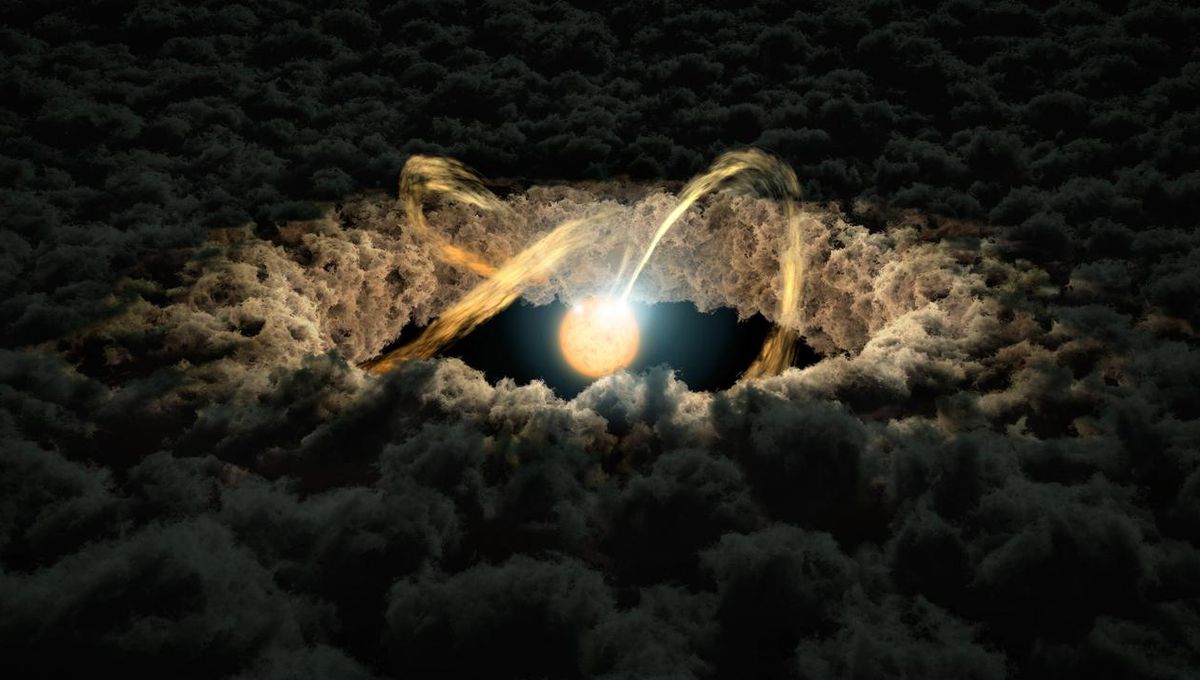
The Solar System condensed out of a vast cloud of gas, seeded with heavier elements by exploding stars, somewhere between 4.5 and 4.6 billion years ago. That’s enough detail for most purposes, but if you want a more precise age, it’s good to consider what part of the Solar System you are referring to.
The Earth is somewhere between 4.5 and 4.6 billion years old. However, there are parts of the Solar System that are older than that – indeed one such piece that came through the roof of a Georgia house recently.
If we were under any illusions that the Solar System formed all at once, it would have been shattered once we gained the capacity to observe very young star systems whose planets are just forming. The clouds of material around stars, known as protoplanetary disks, don’t all collapse at once. Instead, some planets coalesce, creating gaps in the disk, while the rest can take time to catch up.
By being the first planet to start formation, Jupiter got a head start on the rest, allowing it to sweep up more material. Dating Jupiter’s age precisely relies a fair bit on models of its formation that are still under debate.
Nevertheless, it is thought that Jupiter’s core existed within 10 million years of the Solar System’s formation. Very ancient meteorites formed out of two distinct reservoirs, with the gap cleared by Jupiter thought to have created that separation as early as 1 million years after the Solar System formed. A new method puts the time for Jupiter’s formation at just 1.8 million years.
We can’t collect samples of Jupiter to measure its age directly, however. Consequently, we need to use those very old meteorites to make an estimate.
The Erg Chech 002 meteorite is thought to have formed from lava that crystalized on an early protoplanet, which was subsequently destroyed in the giant dodgeball game that was the early Solar System. Using the ratios between isotopes of aluminum and magnesium, planetary scientists have concluded it was 4,565 million years old, but the object it came from started forming up to a million years earlier.
That’s the oldest meteorite we have measured. NWA 11119 comes in at a relatively spritely 4,564.8 million years, but it still might be second oldest.
There’s still uncertainty about this, with some estimates placing the age of the first clumping at 4,567 million years ago with a bit of variation after the decimal point.
So do we have an answer? Well not necessarily, because the oldest solid objects in the Solar System aren’t the only way to define its age. After all, we see those protoplanetary disks around other stars, because the stars have already started to shine. Similarly, the Sun is almost certainly older than the planets or any asteroids that provide meteorites.
Once again, we can’t measure the Sun’s age directly, but given the likely gap between its collapse to initiate fusion and the first protoplanets, estimates tend to be around 4.57 billion years, a few million years older than its children. It wasn’t very systematic, but you could still say there was a Solar System from the time the Sun started to shine, prior to the first planets.
All “explainer” articles are confirmed by fact checkers to be correct at time of publishing. Text, images, and links may be edited, removed, or added to at a later date to keep information current.
Source Link: How Old Is The Solar System? (And How Can We Tell?)